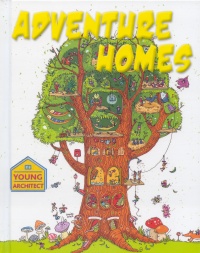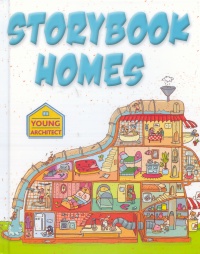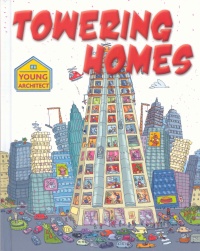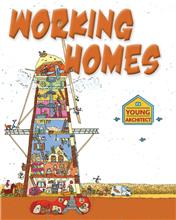| ________________
CM . . .
. Volume XX Number 20. . . .January 24, 2014
excerpt:
Crabtree’s new “Young Architect” series, designed to introduce readers to basic architectural principles and vocabulary, showcases a variety of building styles around the world and encourages readers to think creatively and plan structures of their own. The cartoon-like drawings on the books’ covers seem to indicate that these books are meant for a younger audience than what is suggested by the publisher. Each title focuses on a theme, and for the most part, this strategy is successful. The text explains architectural terms and tools, home building materials, steps in building specific types of homes, and design and construction elements, as well as providing examples and a bit of history of different kinds of homes around the globe. It would have been beneficial to have included a few more architectural terms (e.g. scale, proportion) and perhaps the instructions for one related activity per book. For example, readers could have made a scale model of their bedroom or perhaps a plan of a play structure for their backyard. A couple of font styles have been used, and while the font chosen for the main body of the text is a welcome departure from the usual simple style, the font selected for the “Architect’s Notebook” section and the labeling of photographs and illustrations quickly becomes monotonous. Vibrant colour photographs enhance much of the text; however, what doesn’t quite work is the inclusion of very juvenile cartoon-type illustrations and diagrams, many of them resembling the black line drawings found in colouring books. Building cross-sections and plans are essential in a series of this nature, but having so many details within them, many rendered in a humourous vein, takes the focus away from the main topic. A table of contents, a glossary, an index and a list of print and online resources are provided. Most kids are familiar with treehouses, and so it is fitting that Adventure Homes begins with an invitation to plan a treehouse (however, the author does all the planning, leaving nothing for the reader to decide). The text states, “The architect draws a detailed plan of the structure”, yet the word “plan” is not used in the same context as architects would use it. Instead, the diagram shown is actually an elevation. Various types of unusual homes are featured: houses on stilts, caravans, lavvus and tipis, yurts, floating homes such as sampans, junks and houseboats, and ice houses. Readers who have not yet heard of the ice hotel in Quebec City will find it fascinating. Storybook Homes offers a unique take on the series’ theme, featuring homes found in well-known fairytales and nursery rhymes. In this title, readers will learn about the building materials and structural features of a castle, a tower (from the story of Rapunzel), a shoe house (as in The Old Woman Who Lived in a Shoe), a cottage (a la Hansel and Gretel) and the houses built by the Three Little Pigs. There is information about site and floor plans as well as room layout. With available land being at a premium in densely populated urban areas, building “up” is the obvious solution, but there are problems inherent in the design of towering structures. In Towering Homes, there is information about the most commonly used materials for apartment buildings and skyscrapers- glass, reinforced concrete and steel- and the importance of having a deep piled foundation for support. Topics in this title include pueblo homes, cliff houses, pagodas, and homes on stilts. Readers will be introduced to the scale model, an important tool for architects. Throughout history people have lived and worked in their homes, perhaps with their business on the ground floor and their living quarters upstairs. Working Homes discusses windmills and how they work, lighthouses, submarines, a ranch, and even the International Space Station which serves as a home for up to six astronauts. Readers can also examine a tulou, a large circular building made by the Hakka people of China. Within the walls of the tulou are shops, animal pens, a courtyard, a shared kitchen, and up to 250 small family rooms. Generally, these titles contain some good information, but some revision is necessary to make this series a contender. Recommended with Reservations. Gail Hamilton is a former teacher-librarian in Winnipeg, MB.
To comment
on this title or this review, send mail to cm@umanitoba.ca.
Copyright © the Manitoba Library Association. Reproduction for personal
use is permitted only if this copyright notice is maintained. Any
other reproduction is prohibited without permission.
NEXT REVIEW |
TABLE OF CONTENTS FOR THIS ISSUE
- January 24, 2014.
AUTHORS |
TITLES |
MEDIA REVIEWS |
PROFILES |
BACK ISSUES |
SEARCH |
CMARCHIVE |
HOME |



